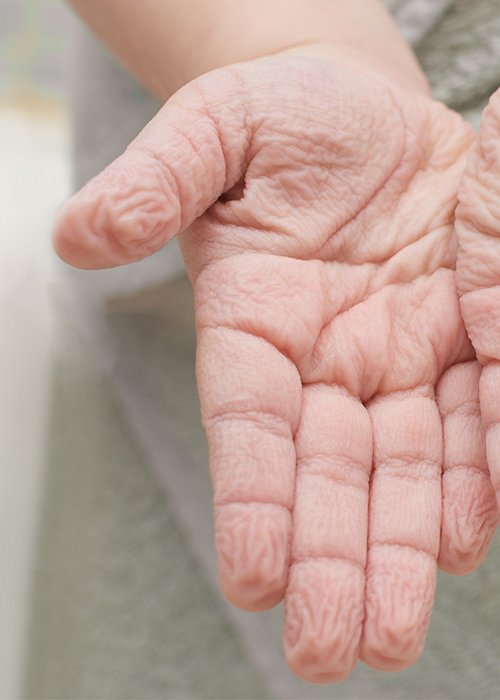Why does our skin wrinkle when we spend time in water? A new study reveals that it’s not a sponge-like effect, the skin doesn’t puff up from absorbing water, as previously believed. The real explanation is more complex and involves the nervous system rather than just the skin itself. The skin on the palms of our hands and soles of our feet is special: it’s called glabrous skin, a Latin term meaning “hairless.” This smooth skin is packed with sensory receptors that transmit signals to the brain. A study of patients who had contracted polio nearly a century ago provided the first crucial clue. In 1936, researchers Sir George White Pickering and Thomas Lewis observed that people with nerve damage caused by polio didn’t develop wrinkled fingers, even after prolonged exposure to water. These patients had damage to the median nerve, which links the brain to the hand and forearm and is part of the sympathetic nervous system. The latter prepares the body for physical action, influencing heart rate and pupil dilation. Research in the 1970s identified that it was damage to the sympathetic connections within the median nerve that prevented the formation of wrinkles. Immersing a hand in warm water even became a diagnostic test for this kind of nerve damage. In 2003, a study revealed how the sympathetic nervous system causes the wrinkles: immersion in water leads to a sudden drop in blood flow to the fingers. This reduction is due to vasoconstriction (narrowing of the blood vessels) triggered by the sympathetic nervous system. But why does this happen? A 2021 study showed that wrinkled fingers improve grip on wet objects. Participants in the experiment were better able to handle moist items with pruney fingers than with smooth ones. This suggests an evolutionary advantage for our ancestors, who may have been better able to grip fish or cross rivers without slipping thanks to their wrinkled hands and feet.




